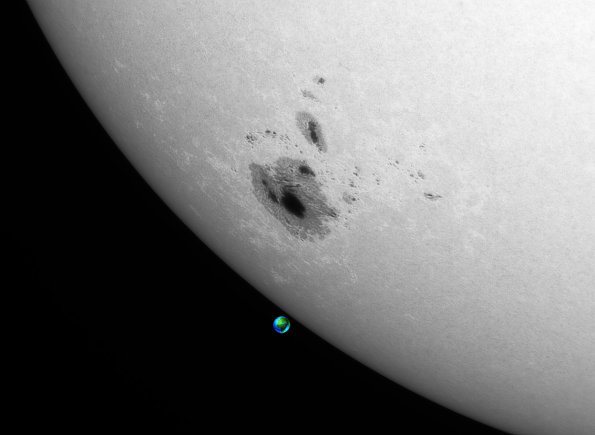Home | Gallery of astronomical pictures | SUN White-Light | Emergence of the AR 12192
Emergence of the AR 12192: Largest sunspot in 24 years (monochrome version)
(Freely adapted from TECH TIMES)
AR 12192 is a sunspot first spotted on Oct. 18, (here on 19) lingering into view for a couple of weeks before slipping out recently. It's about the size of Jupiter, making the sunspot so large that in can be observed from Earth without using a telescope.
During the time AR 12192 was observable from the planet, it shot out 10 solar flares, six of which were X-class types and four of which were of the M-class variety. However, the sunspot did not release any coronal mass ejections (CMEs) or powerful bursts of plasma.
Given AR 12192's size, it may be possible to see the sunspot again when the active region faces the Earth once more in about two weeks. While there's no guarantee of this, larger sunspots have historically stayed observable after the sun turns. For those interested in catching AR 12192, eclipse glasses are needed. Never look at the sun directly to avoid serious eye damage.
As active regions on the sun, sunspots are formed when magnetic field lines become warped and twisted. Some part may break out, showing up on the surface as a sunspot. AR 12192 and all other sunspots are darker than the sun because they are cooler in temperature than the area around them.
Not yet rated

